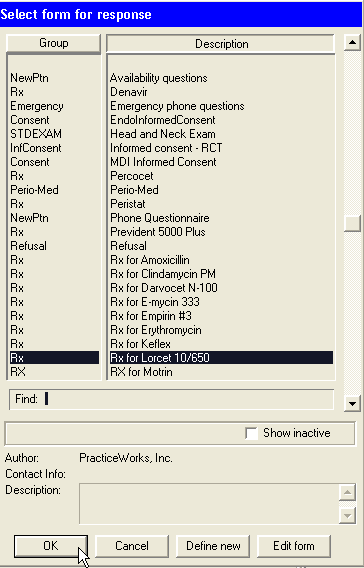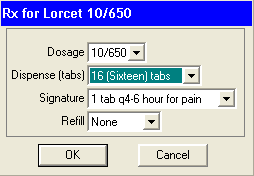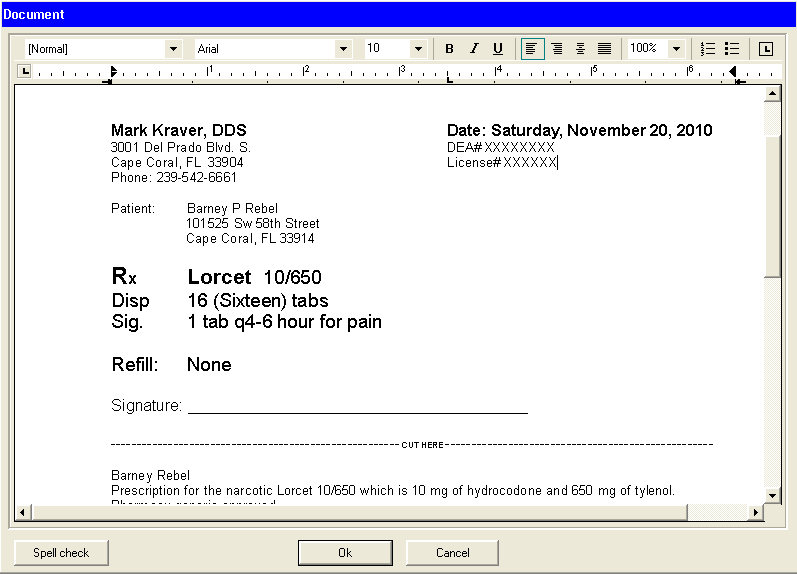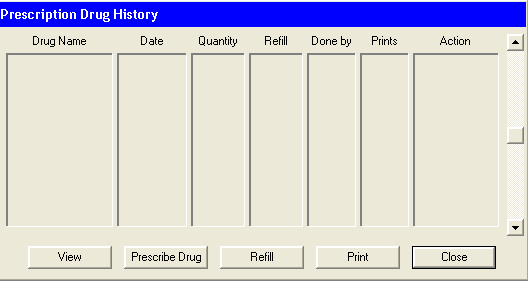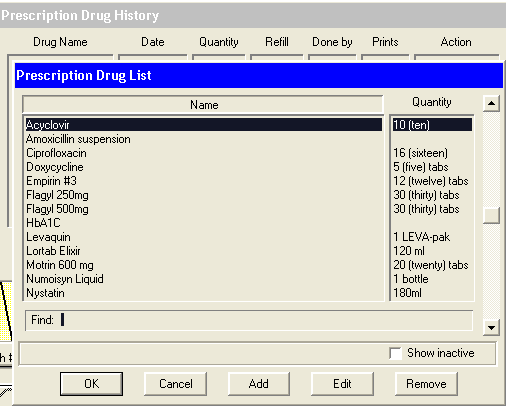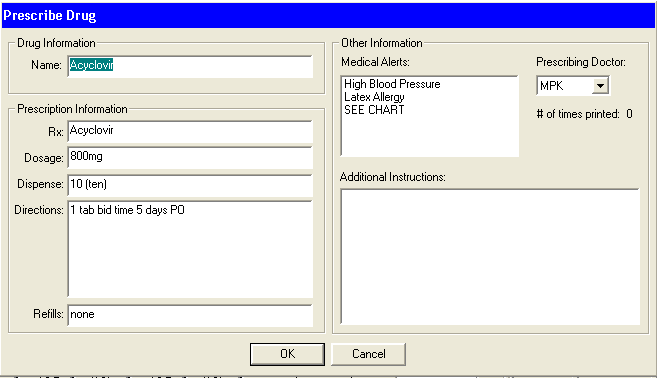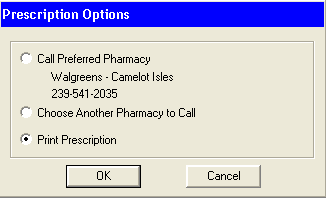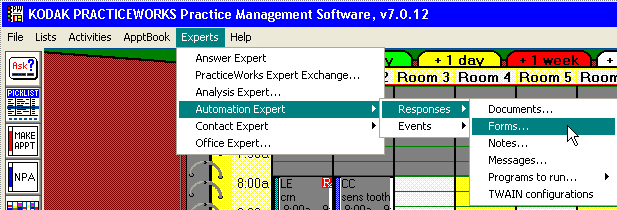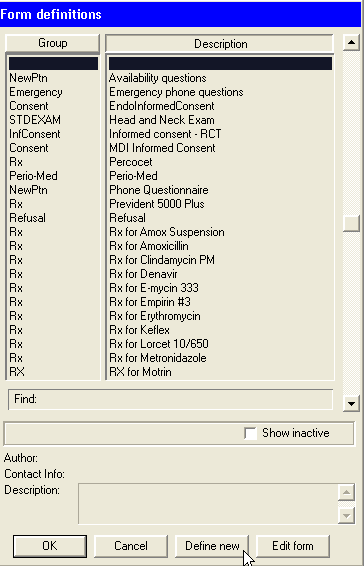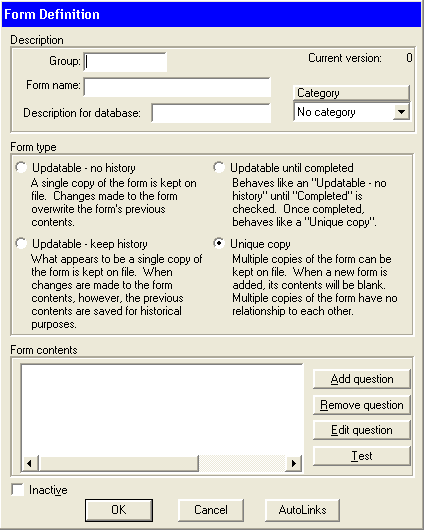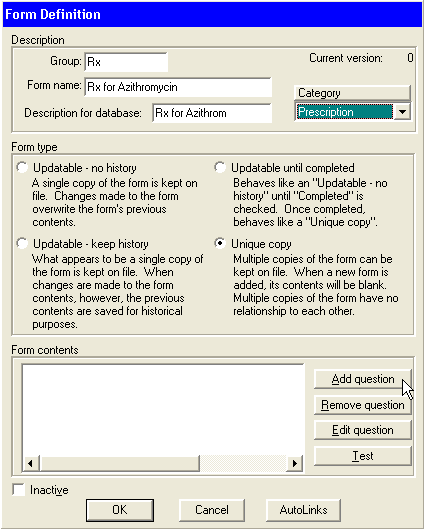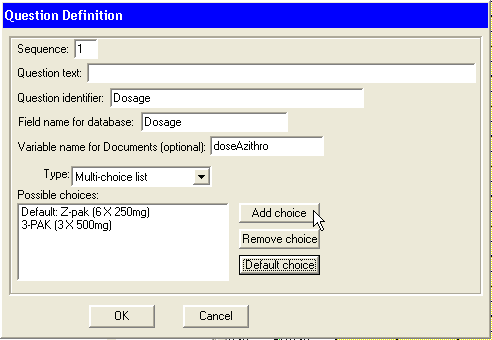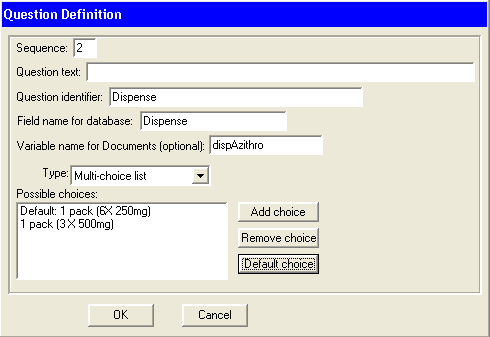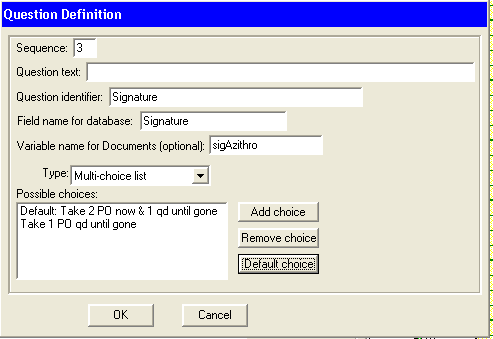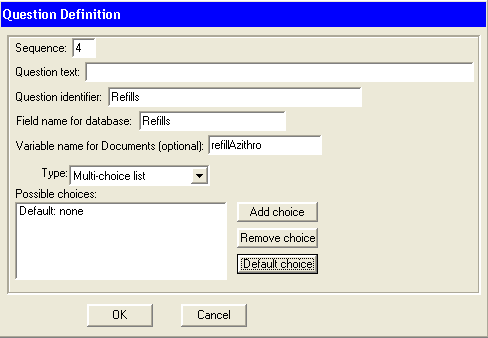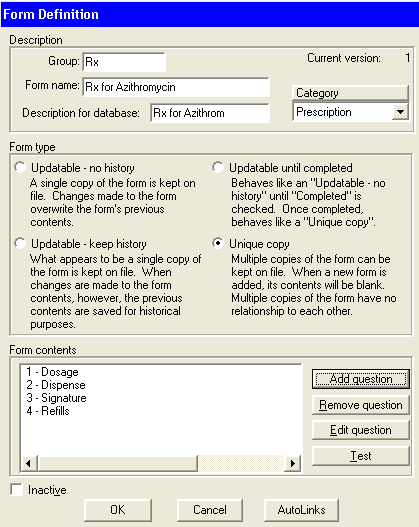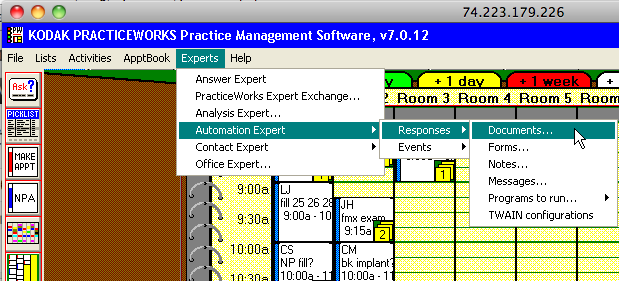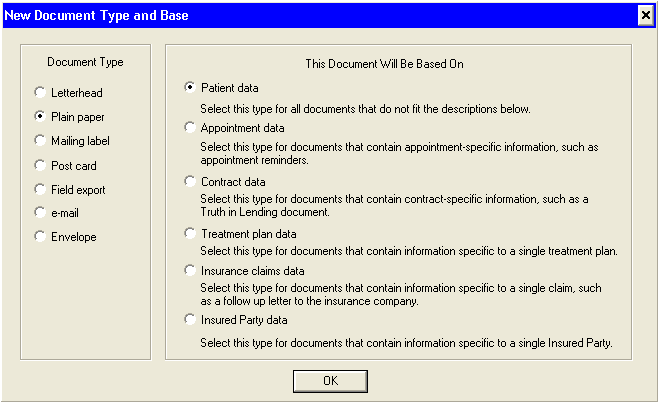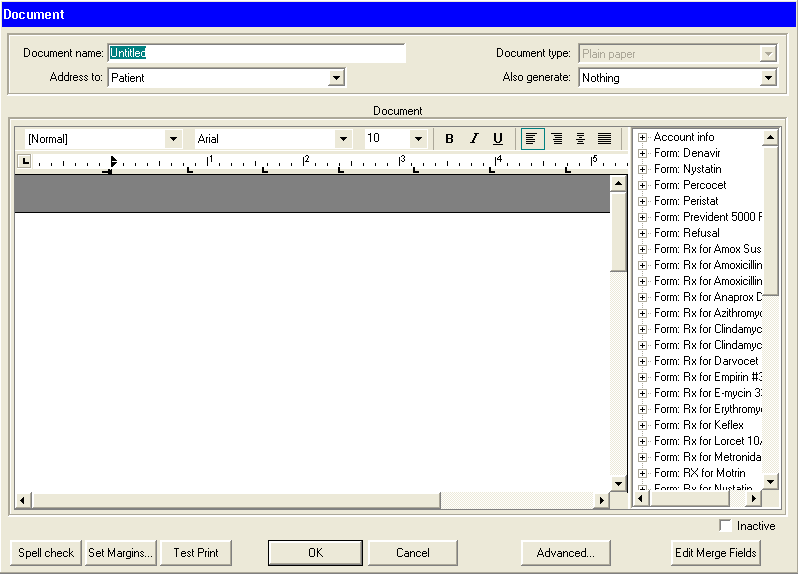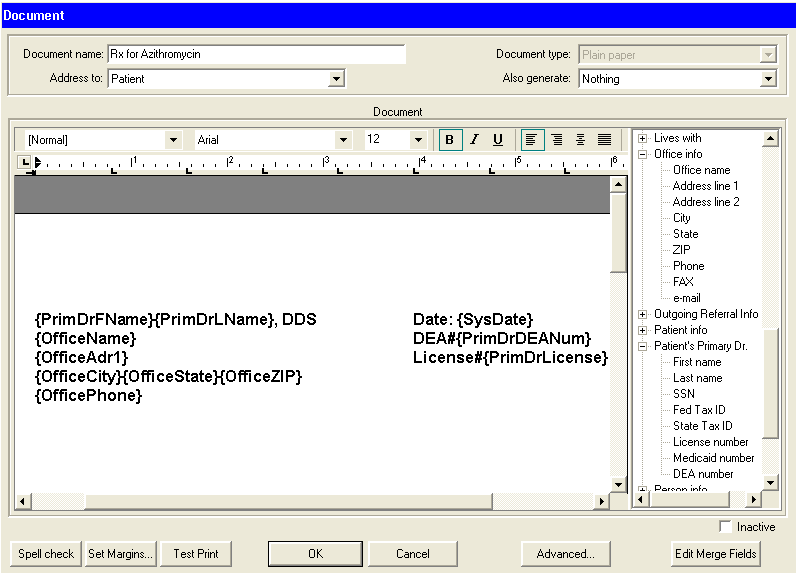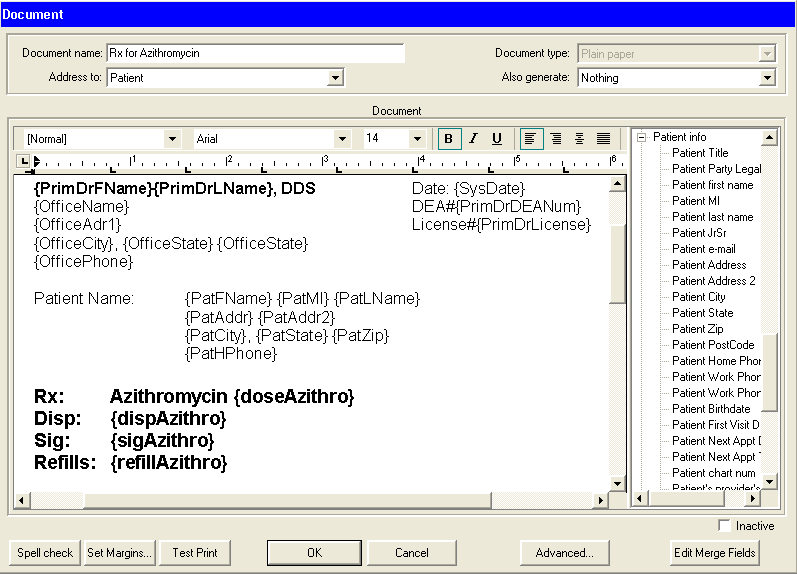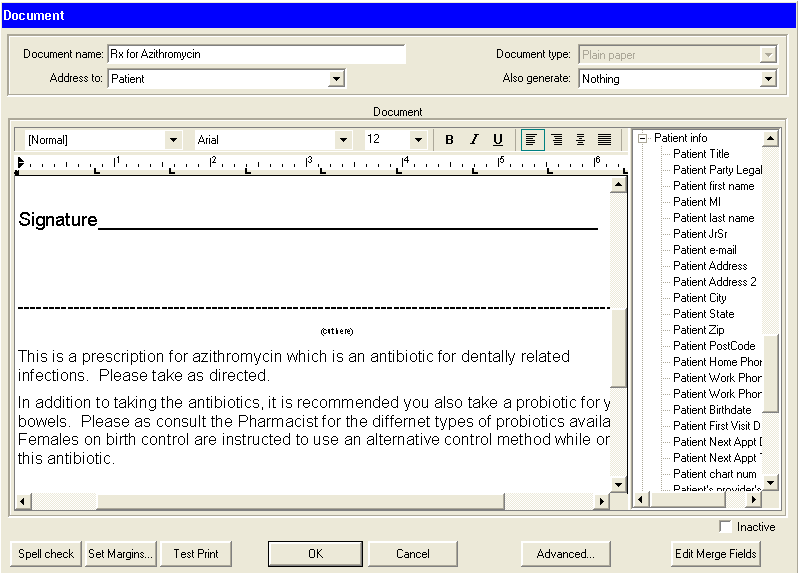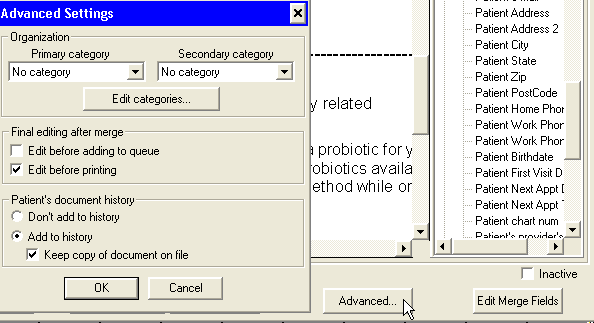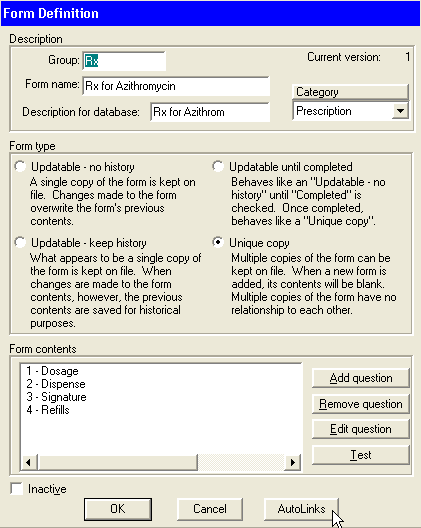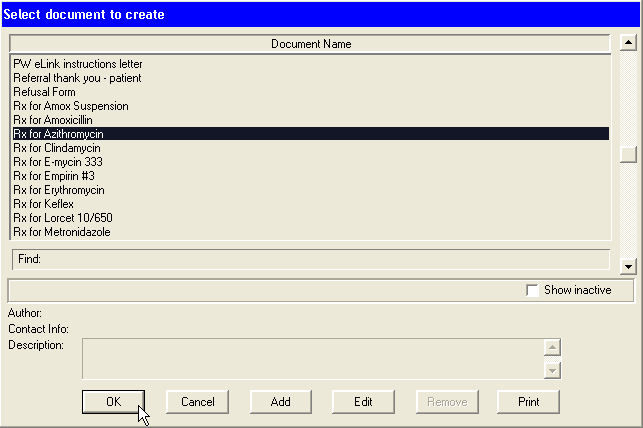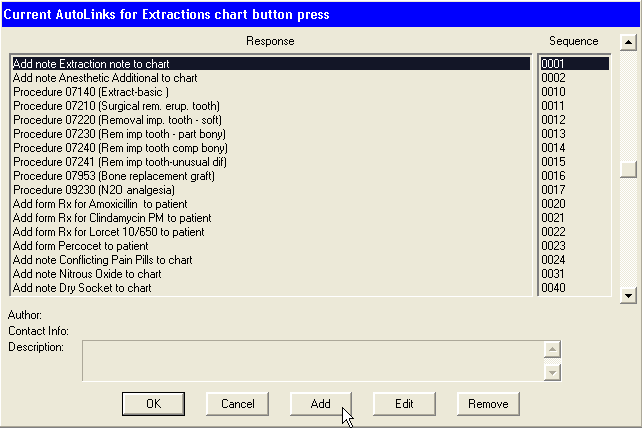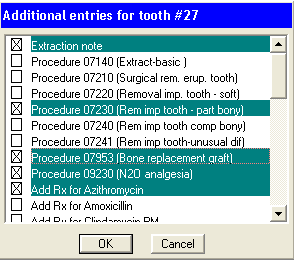Tutorial: Creating a new prescription in the “Forms” section is quite different from creating one under the “Prescriptions” section. The reason why I like my prescriptions written under the “Forms” section and NOT the new easier to use “Prescriptions” section is because “Forms” prescriptions can be added to “Procedure” buttons. “How to Design a Carestream/Kodak PracticeWorks Dental Form: Edit Prescription”.
For example, I’ll write two prescriptions, one through the “Forms” section and one through the “Prescriptions” section.
First, the “Forms”:
Press the “Forms…” button
Select and press “OK” or just double click on the selection.
I have my prescription variables already pre-set to default setting that I use the most. Fill out the variables and press “OK”.
Make any changes to the form you wish and then press “OK” and it will automatically print to the network printer and be posted to the running procedures list .
Now lets fill out a prescription in the new “Prescriptions” button:
Press the “Prescriptions” button.
Press “Prescribe Drug”
Pick a drug from the list by selecting the drug and pressing “OK or make a new one by pressing “Add”. Remember the Rx that appear in this list must be put in there before you can use them.
You can now edit this form from memory, and press “OK”
Press “Print Prescription”.
Those “Call” features are the subject for another blog!
Notice that if you have never written a prescription for this particular patient in this “prescription” section, none will be listed. The Rx’s you have already written in the “Forms” section will not appear in this list. It will keep a running tally of all the prescriptions you have written for this patient only under this “Prescriptions” section. This section is extremely handy, especially for Rx’s that you do not prescribe very much or want to make on the fly.
All of the Rx’s in this section are static prescriptions in that you have no pull down boxes to help you remember the different dosage, dispensing, and signatures. But that’s what you have Epocrates on your iPhone for, right!
However, making a prescription with the “Forms” section is much more involved, but once they are made are extremely easy to use and can be links with “Procedure” buttons for lightening fast charting which is great when you have a busy schedule and are not in the habit of charting everything at the end of the day or week. This can be so automated that even your dental assistant could fill it out for you if you wish. I don’t let mine, but you certainly could if you want to trust your license in the hands of your staff.
Making a “Forms” prescription from scratch:
This involves alternating between different sections of PracticeWorks by:
1. Create variables for the new form
2. Create a new document to place the variables and text format of the prescription form (or other type forms wanted, e.g. informed consent, post-op instruction, refusal forms, releases, school/work excuse, referral forms, etc…).
3. AutoLink the form variables to the document
4. AutoLink the form to a procedure button
First think of a prescription or form you want to use all the time, go to the forms menu:
Don’t select anything and press “Define new”
Fill out the fields and select the proper “Category”
Press “Add question”. This form will be a Rx for Azithromycin and the questions will be “Dosage”, “Dispense”, “Signature”, and “Refills”.
Create a New Document from Scratch:
Now it is time to create a new document. Press “OK” and then “Cancel” to get to the main schedule page.
There are two ways to make a document: Copy and paste the variables from one document of similar type, or create a whole new one from scratch. Since we have already done the easy copy/paste one in “How to Design a Carestream/Kodak PracticeWorks Dental Form: Edit Prescription” we will concentrate on building one from scratch.
Do not select anything and press “Add”
Select “Plain paper” and “Patient data” and press “OK”
A blank document now needs to be named and then add the variables from the right hand side column scroll box to compose the document you want for a Rx or other type form.
Don’t forget to insert the proper text where needed between the {variables}. Use tabs to line up the information.
Trouble Shooting:
Sometimes it is hard to insert text or a return because the cursor keeps getting stuck on highlighting a variable. I find it easiest to just delete the last variable then re-insert it and then place the cursor next to the variable giving you trouble and put one space key to separate the cursor from locking onto the variable when you want to use text characters.
Don’t forget to add the patient instructions.
Next press the “Advanced…” button
Select the check boxes “Edit before printing”, “Add to history”, and “Keep copy of document on file”. Then press “OK” until back to the main schedule page.
AutoLinking the Form variables with the Document
Select the Form you want to “AutoLink” and press “Edit form”.
Press “AutoLinks”
Press “Add”
Select “Create document” and press “OK”.
Select “Create a specific document” and the next box will pop automatically.
Scroll down and select the particular document you want to AutoLink to and press “OK”.
Press “OK”.
Press “Always print immediately”
Press “Yes…”
Deselect “Response is optional” and press “OK”.
Press “Yes”.
AutoLinking the new Form to a Procedure button
This is the whole reason why you went through all of this computer work in the first place.
I am going to “AutoLink” this new prescription to my procedure “Extr” button that I use for you all of my oral surgery cases by right clicking on the procedure button and selecting “Define AutoLinks”.
Press “Add”
Select “Add form to patient” and press “OK”
Scroll down and select the form you want to add and press “OK”.
Press “Yes…”
Deselect “Response is optional” and press “OK”.
Press “Yes”
Now use the sequencing number on the right side to place the form in the list where you wish.
Good job! Now go and try it out in the patient’s chart.
When you are wanting to fill out the information about the extraction procedure you just did on a patient and you want to Rx Azithromycin it is as easy as clicking a button:
You first highlight the tooth you are working on and make sure you have the right provider selected and the complete button is checked, then press the procedure button “Extr”. The auto-list automatically pops up and you can then select all the appropriate boxes and PracticeWorks does the rest including asking you to filling out the “Extraction note”, sending the accounting information to the front desk for the procedures performed, and asks you to fill out the Rx for Azithromycin. BAM… fast! No more searching around the program for what’s next. It’s all listed there for you in a logical order so you can get to the next room without forgetting a thing. Well worth the effort.


